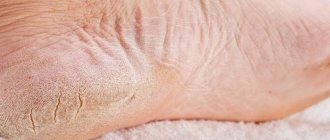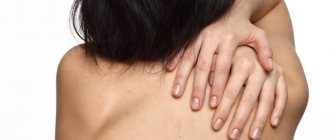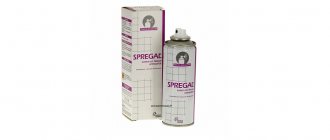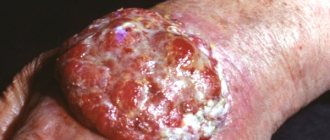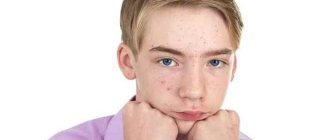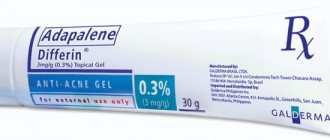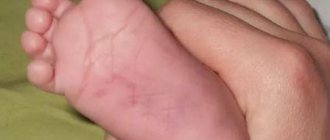Types of fungus
The most common fungi are dermatomycosis.
They include the following pathologies:
- Athlete's foot.
- Microsporia.
- Trichophytosis.
- Favus.
A person is worried about severe headaches, fever, weakness, as general intoxication of the body begins.
If the patient has damage to the hair and nails, and no signs of inflammation are found, keratomycosis is diagnosed.
Candidiasis is predominantly detected on the mucous membranes and sometimes internal organs . Sometimes they can affect the skin of the face, localizing near the corners of the lips.
When a fungal infection affects not only the skin, but also internal organs, they speak of systemic mycoses. They pose a particular danger to the health and life of the patient, and without quality therapy they can lead to death.
To select an effective treatment regimen, it is necessary to determine the causative agent of mycosis and the degree of damage.
About the disease
Dermatomycosis of the skin is a group of skin diseases caused by dermatophyte fungi, which are a normal part of the skin environment.
These are the most common saprophytic fungi, of the genus:
- Candida,
- Trichophytum.
In addition, fungal strains can penetrate the stratum corneum of the dermis and through mechanical damage to the skin, such as:
- abrasions,
- cuts,
- open wounds.
The occurrence of skin fungal infections occurs in two forms:
- With active reproduction of saprophytes.
- With mechanical penetration through a broken skin barrier.
Fungal diseases
pityriasis versicolor on the face
When there is nervous overload, a malfunction occurs in the body, which becomes the most common cause of the development of pityriasis versicolor . Yellow, brown or reddish spots appear on the skin.
They are very itchy, forcing patients to scratch the affected areas. During the combing process, small white scales are removed.
Without medical intervention, the disease lasts for months and even years . Sometimes, under the influence of sunlight, spontaneous recovery occurs, and light spots remain at the site of the lesion.
Trichophytosis is more common and manifests itself as round or oval spots that rise above the skin. Blisters and crusts form on the skin, and a pale, flaky area is located in the middle of the lesion.
The disease is characterized by a chronic course with frequent exacerbations . Over time, scars and blemishes form on the affected areas.
If the wrong effect on the causative agents of these diseases is selected, dermatomycetes may appear. In such cases, patients experience peeling, pimples and blemishes.
Related article:
How to treat groin fungus in men? Symptoms, causes and photos
Classification
There are many varieties of fungi that affect different parts of the body.
Trichophytosis
Mycoses on the face come mainly in the following forms:
- trichophytosis;
- candidiasis;
- pityriasis versicolor;
- seborrheic dermatitis;
- rubromycosis;
- microsporia.
The activity of trichophytosis leads to the appearance of inflamed areas on a person. The disease caused by this pathogen provokes the formation of large spots on the skin, inside of which small nodules form. The development of pathology is accompanied by suppuration of the skin.
Candidiasis occurs due to infection of dermal tissues by yeast fungi. The latter mainly provoke the development of thrush or stomatitis, depending on the zone of localization of the pathogenic microflora (genital organs and oral cavity, respectively). More often, candidiasis occurs in children.
Manifestation of candidiasis on the face
Tinea versicolor also occurs due to the activity of yeast-like microorganisms. This type of fungus appears as a small spot that has a reddish or pink tint. Without treatment, the affected area increases. As the disease progresses, the number of spots that merge with each other increases.
Seborrheic dermatitis in rare cases provokes mycosis of the beard. The disease affects the scalp and causes dandruff. If adequate therapy is not carried out, then as the infection spreads to the face (mainly the forehead), the skin begins to peel off. Subsequently, hemorrhagic crusts form in the problem area.
Rubromycosis rarely develops on the facial part of the head. This is explained by the fact that the fungus Trichophyton rubrum mainly affects the feet or large folds of skin. But sometimes an infection develops in the vellus hair growth area. The course of the inflammatory process characteristic of rubromycosis is accompanied by the formation of papules.
Microsporia develops as a result of infection of the body with a fungus that is transmitted through contact with animals or soil. The course of the pathology is accompanied by the formation of a large red spot surrounded by a cushion.
Microsporia
Why does fungus appear on the face?
After cosmetic procedures or squeezing out pimples, small wounds remain on the surface of the skin.
They are placed as an ideal place for the fungus to penetrate the tissue, after which the mycelium grows freely. This process is accompanied by redness, peeling and itching. Other causes of facial fungus :
- General decrease in immunity.
- Antibiotic abuse.
- Addiction to sweet foods.
- Diabetes.
- Diseases of the digestive system.
- Pathologies of the cardiovascular system.
- Hormonal disorders.
Under the influence of unfavorable factors, the natural microflora is disrupted, and the mycelium threads receive absolute freedom. They easily penetrate various layers of the skin, which leads to negative external changes.
Candidiasis
Candidiasis is a fungal infection of the skin, where the causative agent is fungi from the Candida family. This family is widely distributed on human skin. They inhabit it constantly, literally from the moment of birth. The development of the disease is observed against the background of a strong decrease in the quality of the immune system or with prolonged use of antibiotics.
Candidiasis most often appears at the site of natural folds of the skin. The development of the disease leads to the lesions spreading throughout the body. In rare cases, symptoms of candidiasis may be observed on the surface of the palms and soles. Quite often, symptoms of pathology are observed in newborns. The disease is especially dangerous for patients with diabetes. In such a situation, candidiasis has a long course and often returns in the form of relapses.
The initial stages of the formation of candidiasis are accompanied by the appearance of small redness, on which a rash forms. As the pathology develops, the rash spreads to all parts of the body. In place of small pimples, deep cracks form. The boundaries of damaged skin areas are clearly defined and can be covered with thin scales.
In the vast majority of cases, 50% of patients with skin diseases presenting to hospitals have a fungal infection
Symptoms of mycosis on the face
The specific manifestations of fungus on the face depend on its variety, the type of pathogen and the sensitivity of the skin to external irritants. In the presence of concomitant disorders, the symptoms intensify, forcing the person to refuse contact with others.
How does the fungus manifest itself?:
- Peeling.
- Severe itching.
- Red spots.
- Rashes, ulcers and cracks.
Attention! In children, mycosis is manifested by dry skin and fluid discharge from the affected areas. A gray coating appears on the surface of the spots.
To make an accurate diagnosis, skin particles are taken from the affected areas . Laboratory tests make it possible to determine the pathogen that provoked mycosis, after which it is easier for the dermatologist to select treatment.
Treatment of children
Fungal infections are quite often recorded in children, the reason for this is the incompletely formed immune system and the characteristics of the children's epidermis. Even a slight violation of hygiene when caring for a child can cause a fungal disease.
In children, the pathology is expressed:
- redness of the skin and itching on the affected part;
- humidity of the affected area;
- the formation of purulent plaque on the problem area;
- dry skin;
- rash;
- hair loss
To treat children, experts choose more gentle drugs:
- Miconazole;
- Clotrimazole;
- Terbinafine;
- Naftifin.
The dosage should be consistent with the age, weight and tolerance of the main components of the drug. To treat and activate the skin restoration process, potassium permanganate, boric acid, furatsilin, and salicylic alcohol are used.
The danger of fungus on the face
People often underestimate the danger of facial fungus. They are only concerned about the aesthetic and cosmetological aspects of the problem, which allows the yeast infection to spread unhindered throughout the body.
At the beginning of its development, mycosis looks harmless , since it affects only dead cells. It then affects living tissue, causing the formation of bubbles that gradually burst. Open wounds appear on the skin of the face, which increases the risk of infection.
Fungus on the face: photo
When fungal diseases become chronic, they lead to tissue loosening. The affected areas begin to separate, which looks disgusting.
Without proper treatment, mycosis spreads to internal organs, disrupting their functioning. The vessels suffer the most, and at a certain stage there is a threat to life.
Fungus on the face: video
Related article:
How to cure nail fungus with folk remedies?
Causes
A fungus on the skin of the face can occur in absolutely anyone. In most cases, the development of the pathological process is caused by such reasons as the appearance of wounds and abrasions on the face, as well as the entry of pathogenic microorganisms into them. Microscopic scratches may remain after cosmetic procedures or careless opening of purulent rashes. If the wound is not treated in a timely manner, it will certainly become infected.
There are many ways that infection can enter the skin, and with weak immunity, nothing prevents its development
The active activity of the fungus does not pass without leaving a trace. Because of it, the appearance of the skin greatly deteriorates, and the patient begins to experience constant discomfort. The following unfavorable factors can contribute to the rapid development of a fungal infection:
- Excessive sweating;
- Hormonal disorders;
- Diabetes;
- Impaired functioning of the gastrointestinal tract;
- Neglect of personal hygiene rules;
- Weakened immunity;
- Chronic diseases of an infectious nature.
The fungus thrives in a carbon environment. Therefore, it often develops in the facial area in children and adults who eat a lot of sweets. Uncontrolled use of antibiotics can also be blamed for the development of this disease. Due to long-term treatment with aggressive drugs, a pathological process begins on the face of a child and an adult, as they disrupt the normal balance of healthy and pathogenic microflora.
Drug treatment of fungus on the face
How to treat the pathology is determined in each specific case by a dermatologist or mycologist based on the results of scrapings. To achieve a positive effect, a complex effect on the fungus is necessary.
| Medicine | Impact |
| Multivitamin complexes | Strengthening the immune system, increasing the body's defenses |
| Antihistamines | Reduced manifestation of allergic reactions |
| Antifungal agents for external use | Elimination of external manifestations of pathology, reduction of itching and flaking |
| Probiotics and Enzymes | Restoration and normalization of intestinal microflora |
The most prescribed ointment for fungus is miconazole , which is effective against various types of pathogens. Used twice a day for two weeks. Mycoket is also actively used, which suppresses the growth and reproduction of yeast fungi. The cream is applied not only to the affected areas, but also to adjacent tissues.
With timely use, external remedies are enough to completely defeat the fungus.
If the process goes deeper, medications for internal use are used - Diflucan, Lamisil and Orungal. They act on pathogenic fungi from the inside, destroying their structure and preventing them from reproducing. The pathogens survive the prescribed cycle to the end, after which they die.
Attention! In children, mycosis is treated with different drugs than in adults . A fragile body cannot cope with heavy drugs, so the pediatrician determines the scheme of exposure.
If an infection is associated with the fungus on the face, the use of antibiotics is necessary. Otherwise, the pathological process will spread to the internal organs.
Fungus treatment: video
Main types of fungi and their symptomatic features
Modern science identifies about 400 types of fungal infections, but many scientists note that only a few dozen of them are the most common. Therefore, researchers divided all types of diseases into groups according to a specific type of infection.
So, today the following main types of parasites are distinguished:
- Keratomycosis - a fungus on the skin that is concentrated on the surface or in the horny area of the hair. This type of infection is the least dangerous because it causes diseases whose symptoms are not accompanied by itching or inflammation of the skin. Most often, this parasite causes a disease called “lichen versicolor,” the symptoms of which are expressed in a change in skin color when white spots appear. Often such fungal diseases are observed in adults, but rarely in children under 7 years of age. However, there are cases when children with diabetes still exhibit similar symptoms.
- Yeast-type parasites, which include fungi of the genus Candida, cause redness and itching of the skin, most often in the groin and armpits. Symptoms of the disease are expressed by the rapid expansion of the affected area, so this fungus should be treated as quickly as possible. In this case, antifungal ointments are effective. In young children, white spots often appear on mucous surfaces, in particular in the oral cavity, which indicate infection with this infection.
- Dermatophytosis - it is caused by more serious microorganisms, which often develop in the deep layers of the skin and cause diseases such as trichophytosis, microsporia and epidermophytosis. The main signs of these diseases are inflammatory processes, which in the initial stages form white and red spots on the skin, which cause itching and flaking. As the disease develops, small blisters appear in areas of smooth skin, which eventually burst and release fluid. Such symptoms can occur in both children and adults. Often the causes of such diseases in children are close contact with sick animals.
- Mycoses of the deep type cause a severe reaction in the body and are rare. Such diseases are quite difficult to treat; various complications in the form of viral diseases can occur. Skin damage by a fungal parasite occurs quickly, and antifungal medications help, but slowly. Having eliminated white or red spots on the skin, a relapse may occur.
The main causes of all these diseases lie in a decrease in immunity, as a result of which parasites penetrate the body. It is possible to fully cure all these diseases, but for this it is necessary to systematically carry out special procedures and take antifungal medications. The main thing to remember is that skin fungus is an infection, so avoid contact with contaminated areas. And if you find any signs or symptoms of mycosis, do not immediately begin self-medication, it is better to immediately consult a dermatologist for diagnosis.
Traditional medicine in the treatment of mycosis on the face
To relieve itching and local inflammation during mycosis, along with medications, folk recipes are actively used.
Traditional medicine recipes for fungus:
- Lemon juice . It is rubbed into the affected areas several times a day. The product is effective by creating an acidic environment that inhibits the growth of fungi.
- Onion or garlic gruel . Add a little butter to chopped garlic or onion. The resulting mass is applied to the affected areas and left for half an hour. Then the mask is washed off, but when using this product there is a high probability of an allergic reaction.
- Raisin . Cut the raisin into two halves and rub it across the face. The procedure is repeated several times a day.
- Freshly brewed coffee. Boil coffee in a small container, let it cool and wipe your face with it.
- Horsetail . Rinse your face with a decoction of horsetail 3-4 times a day, which helps reduce itching and irritation.
Before testing any folk recipe, you should consult a specialist whether this remedy can be used to treat fungus on the face. When using traditional therapy, you cannot refuse medications , since there is a high probability of the disease becoming chronic.
Related article:
How is toenail fungus treated? Photo deletion
Top 10 drugs from the pharmacy
Mycosis of the facial skin (drugs are selected individually) is treated quite simply if diagnosed in the initial stages. Today, on pharmacy shelves you can see many medications that have different effects on pathogens. The choice is made by the doctor after examination.
Cream Nizoral
A medicine based on ketoconazole, which is available in several dosage forms. The most popular is cream, but shampoo and oral tablets are also available for patients. The product helps suppress the activity of fungi on the surface of the skin, eliminates itching and burning, and prevents the spread of the lesion.
The drug is used externally not only for fungal infections of the skin of the face, but also for identifying fungus of the feet, nails, body skin or scalp. The cream is always applied to the affected areas 2-3 times a day in a thin layer, treatment lasts up to 3 weeks. The tablets are taken orally in the amount of 1 piece per day for 3-4 weeks.
The cream is not prescribed if you are allergic to its components.
Tablets are contraindicated in many cases:
- Pregnancy and lactation period.
- Age up to 3 years.
- Kidney and liver failure.
- Heart failure, acute angina.
- Internal bleeding.
- Acute mental disorders.
The product can provoke negative reactions such as abdominal pain, dizziness, and an allergic reaction to the skin. In case of an overdose, all symptoms worsen, and the patient’s life is threatened. The medication is available in pharmacies with a doctor’s prescription and costs approximately 500 rubles.
Ketoconazole
Popular tablets based on the component of the same name, which have pronounced antifungal properties. The ingredients in the composition stimulate tissue repair and suppress fungal activity, which leads to recovery. The drug is also available in cream form. Usually prescribed for mycosis of the skin, scalp and nails.
Tablets are taken 1-2 tablets per day for 2-4 weeks. The cream is intended for external use; it is used to treat the affected areas 2 times a day. External use lasts up to 3 weeks. The drug is not prescribed during pregnancy and lactation, in case of intolerance to its components, or progression of acute diseases of the digestive tract.
If the instructions are not followed, the product may cause complications such as headache, nausea and vomiting. Some patients talk about indigestion and stool problems. In case of overdose, the condition worsens, weakness, frequent vomiting, and lack of appetite are observed. The drug is dispensed from pharmacies with a prescription, the price is approximately 300-400 rubles.
Daktarin
Mycosis of the facial skin can be treated at the initial stage with ointments. Local medications help localize the lesion. Daktarin is available in the form of an ointment intended for external use based on miconazole. The medication effectively suppresses the activity of fungi and leads to their gradual death.
The drug is prescribed for any form of mycosis of the nails and skin. The ointment must be applied in a thin layer 3 times a day for 14-21 days. Contraindications include pregnancy and lactation, intolerance to the main or auxiliary components of the composition.
The medication can provoke complications in the affected area, that is, it leads to the appearance of a rash and increased itching. The drug does not provoke an overdose, even with long-term use, but it is recommended to follow all doctor’s recommendations.
The product is available in pharmacies with a prescription from a doctor. Its price starts from 200 rubles.
Dermazol
A cream for external use, which contains ketoconazole, has pronounced antifungal properties and helps destroy fungi on the surface of the skin. The drug is highly effective and quickly copes with the symptoms of the pathology. Prescribed for fungal infections of the skin, nail plates and scalp.
The product can be applied 2 to 4 times a day, depending on the symptoms and extent of the lesion. Treatment lasts up to 4 weeks. Usually this time is enough to obtain a therapeutic effect.
The medicine is not prescribed for allergies to components or a tendency to such manifestations. The drug rarely causes complications. They usually manifest themselves externally in the form of a rash and itching.
Only in some cases are complications accompanied by systemic disorders in the form of headache, irritability and deterioration of general condition. In most cases, no special treatment is required, and the condition returns to normal a few days after the end of the course.
Cases of overdose of the drug have not been recorded. The drug is dispensed at the pharmacy with a prescription. It costs about 600 rubles.
Terbinafine
Mycosis of the facial skin (preparations for use can be produced in different forms) is effectively treated with Terbinafine. The product is available in the form of tablets, topical cream and topical ointment. The drug disrupts metabolic processes in fungal cells, which leads to their death, and contains the active component of the same name.
The drug is prescribed for systemic mycoses, fungal infections of the skin of the face and body. The medication is indicated for nail fungal infections. The cream or ointment is applied to the areas of skin affected by mycosis 2-4 times a day in a fairly thin layer.
Repeat the procedure for at least 3 weeks in a row. Tablets are taken in the amount of 1-2 pieces per day for 2 weeks. After this, the patient visits a doctor, who extends or cancels treatment.
The medication is not prescribed for liver and kidney failure, acute gastric ulcer. It is contraindicated for children, pregnant and lactating women.
The drug can provoke complications such as drowsiness, weakness, and loss of appetite. Overdose in most cases is caused by pills and is accompanied by a severe allergic reaction, deterioration of general condition and other disorders. The drug is dispensed in pharmacies with a doctor's prescription. Its price starts from 200 rubles.
Mikonorm
A popular cream for external use containing terbinafine as the main active ingredient. The product helps to quickly destroy fungi on the surface of the skin, prevents the outbreak from spreading to large areas, and helps to avoid the development of complications.
The medication is prescribed for fungal infections of the skin of the face, limbs or torso. The cream is applied in a very thin layer to the affected areas 2-3 times a day. Treatment lasts at least 3 weeks, after which the patient undergoes examination.
The drug quite rarely leads to the development of complications; they usually manifest themselves locally in the form of skin itching, irritation and rash. It is not prescribed for allergies to components, during pregnancy and lactation.
It is worth noting that in some patients the allergic reaction is severe, leading to the development of general symptoms such as drowsiness, weakness and loss of appetite. Usually, after stopping the use of the remedy, the manifestations disappear; special treatment is not required. If symptoms worsen, patients are prescribed medications.
The drug does not lead to overdose, even with prolonged use. Only in exceptional cases is there a deterioration in the condition and aggravation of all negative reactions. The product is sold in pharmacies without a prescription from a doctor. The price is approximately 130 rubles.
Lamisil
Mycosis of the skin of the face (drugs can have a wide range of antifungal activity) is considered a less common disease, but specialists often prescribe for treatment medications intended for the treatment of the skin of the lower extremities.
Lamisil is available in the form of external ointment and tablets for oral use, is used for external and systemic pathologies of fungal origin, and contains terbinafine.
The ointment is applied 2 times a day in the morning and evening in a thin layer. Tablets are taken in 1-3 pieces, depending on the severity of the manifestations. The maximum duration of the course is 4 weeks, but if necessary, it is allowed to extend the use to 8 weeks if there is no pronounced therapeutic result.
The drug is not prescribed for allergies to the composition, during pregnancy and breastfeeding, or in childhood. The ointment rarely provokes local negative reactions in the form of allergies.
Tablets can lead to complications:
- Decreased appetite.
- Weakness.
- Irritability.
- Pain in the stomach area.
- Digestive and stool disorders.
- Deterioration in the quality of vision and hearing.
In case of an overdose, the symptoms worsen, a veil appears before the eyes, and spots appear. Usually an overdose is caused by pills. The drug is available in pharmacies with a prescription, and its price starts at 1,500 rubles.
Exifin
A terbinafine-based product, which is available in the form of oral tablets and ointment for topical use. The medicine is highly effective. When applied topically, it quickly destroys fungi and helps restore the integrity of the skin. Medicine is prescribed for systemic and local mycoses of various forms and degrees of neglect.
The tablets are taken orally in a daily dosage of 1-2 pieces, the ointment is applied externally to the affected area 2 times a day. The duration of the treatment course is 4 weeks. In each case, the course and dosage can be adjusted. The drug is not prescribed if its components are intolerant. During pregnancy and lactation. It is contraindicated in patients with damage to the stomach, pancreas and kidneys.
If the instructions are not followed, the ointment provokes local negative reactions in the form of a rash and irritation. Tablets can lead to headaches, vomiting, and loose stools.
If symptoms persist for a long time, the patient's condition worsens, and dehydration may develop, accompanied by dry mouth and severe thirst.
In case of overdose, the manifestations become more pronounced, which requires immediate medical attention. The medication is available in pharmacies without a prescription and costs approximately 300 rubles.
Undecin
A popular ointment based on undecylenic acid, which has pronounced antifungal properties. In this case, the active substance affects the growth and development of fungi on the surface of the skin, which leads to their death and cleansing of the affected area. The drug is prescribed for mycoses of the skin of the face, limbs or torso.
The drug is used for 20 days with daily treatment of the skin with a thin layer. After this, the patient undergoes a re-examination, which confirms the effectiveness of the treatment. The drug is not prescribed to patients under 2 years of age, as well as to patients with individual sensitivity to its components.
The medicine rarely causes complications, since it is applied only locally. Some patients report skin burning and irritation, symptoms disappear after stopping therapy.
Despite this, the ointment may be accompanied by other complications:
- Itching of the skin of the eyelids.
- Tearing.
- Swelling of the eyes, namely the mucous membranes.
- Souring of the eyes.
- Allergic rhinitis, accompanied by the discharge of a large amount of clear liquid mucus from the nose.
- Weakness and fatigue due to an allergic reaction.
- Apathy, depression.
There have been no recorded cases of overdose of the drug, but doctors do not exclude this possibility and assume that all negative reactions will worsen.
The medication is sold in pharmacies without a prescription and costs approximately 400-470 rubles.
Zinkundan
Mycosis of the facial skin (drugs can be used systemically or locally) can be treated quite well with ointments based on undecylenic acid. Zinkundan ointment is one of these products. The composition also contains zinc undecylenate and anilide, which has a pronounced antifungal effect by suppressing the activity of fungi and disrupting their metabolism.
The drug is prescribed for mycoses of the skin of the trunk, face or limbs. Apply the ointment in a thin layer to the affected areas no more than 2 times a day. The first course of treatment lasts 20 days. After this, the specialist evaluates the effectiveness of the treatment, extends the course or cancels the remedy.
The drug is contraindicated in cases of intolerance to its components, the presence of wounds and cracks in the area of intended application, or the formation of purulent foci. The ointment acts aggressively, so it can provoke skin irritation, increasing its sensitivity and susceptibility to negative external factors. In this case, treatment is stopped and symptomatic therapy is prescribed.
To date, no cases of overdose of the drug have been recorded, which is considered its advantage. The product is available in pharmacies without a prescription, and its price is approximately 150 rubles.
Mycosis of the skin is considered a fairly common disease among patients of different genders and ages. Facial damage is not observed so often. Effective drugs are now available in pharmacies in various dosage forms, which facilitates therapy.
The combination of several medications in different forms allows you to achieve maximum therapeutic results over a short period of time and prevent the development of complications.
Prevention of mycosis
Fungus on the face is easier to prevent than to cure.
Because of this, doctors recommend adhering to preventive recommendations that reduce the likelihood of contracting mycosis. Preventive measures :
- Compliance with personal hygiene rules.
- Strengthening the immune system.
- Exercise stress.
- Alternation of work and rest.
- Use only your own personal towels, slippers and other items.
- Thoroughly wash your hands and face after returning from the street.
- Treatment of wounds on the face with an antiseptic.
- Avoid contact with infected people.
Following simple rules will help protect yourself from the appearance of fungus on your face. With minimal effort, a person will keep their skin clean and healthy.
How to prevent fungal acne?
Although fungal acne cannot be completely prevented, these steps can help reduce the chance of a recurrence of the infection:
- Use anti-dandruff shampoo regularly. Regular rinsing can help maintain a healthy yeast balance on the skin. Once the rash subsides, you can reduce the frequency of using shampoo to wash your body to once a week.
- Wear breathable fabrics. Breathable fabrics allow air to circulate, which reduces temperatures in warm, humid environments that encourage fungal growth. If changing your clothes helps treat fungal acne, consider wearing similar types of clothing.
- Shower after sweating. A quick rinse after a workout or a hard day at work can help prevent yeast growth.
- Eat a balanced diet. Balance your diet with fruits, vegetables and proteins to prevent fungal overgrowth.
When should you see a doctor?
If you've tried treating suspected fungal acne at home and the breakout persists for more than 3 weeks, visit a dermatologist.
Prescription antifungal medications may be more effective in clearing up the infection than topical treatments.
You may be able to find treatment that will help stop the relapse and prevent possible long-term problems. You can also discuss preventative options with your doctor.
If you find an error, please select a piece of text and press Ctrl+Enter.
